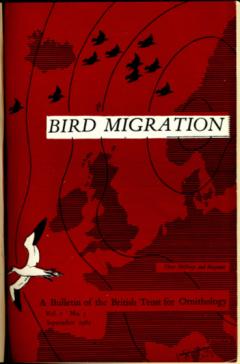Amateur and professional naturalists were enthralled by bird migration in the years following the Second World War. In Britain two "bird observatories" had been created in the mid–1930s, but in the postwar craze 15 more were opened in as many years. Like the wartime Chain Home radar stations, the observatories formed a coastal chain. This project examines the imaginative appeal of these popular observatories and the path of their subsequent decline. The observatory movement came out of a period in which cultures of surveillance appeared in a range of contexts. Birdwatching in particular rose dramatically in popularity from the 1930s onwards, and during wartime birds were used symbolically to articulate aspects of identity and heritage. The locations of the observatories, often on islands, also resonated with contemporary ideology. The project explores their alignment with island mythology and the connection between this and the prisoner-of-war camps with which the movement was strongly connected. It investigates the tensions between the observatories as isolated places and as sites of science stretching over extended space, through examining the attempts to coordinate the observatories into a network and thus legitimate the theory of "drift migration." The observatories’ scientific status is also considered in terms of amateur–professional boundaries, particularly the pioneering of ‘field taxonomy’ by the amateur-naturalists running the observatories. Finally, the project examines how geographical factors were crucial to the observatories’ decline, as the "all-seeing eye" of radar was turned towards bird migration and the observatories’ work seemed too localized to support theoretical claims.

For a five-year period at the height of the observatory movement, the British Trust for Ornithology employed a special "Bird Migration Officer," who edited this journal, which was largely devoted to the observatories' progress.
Project
(2011)
Mining the Sky: British Bird Observatories and Radar Ornithology, 1935-1965
- Sophia Danielle Davis
